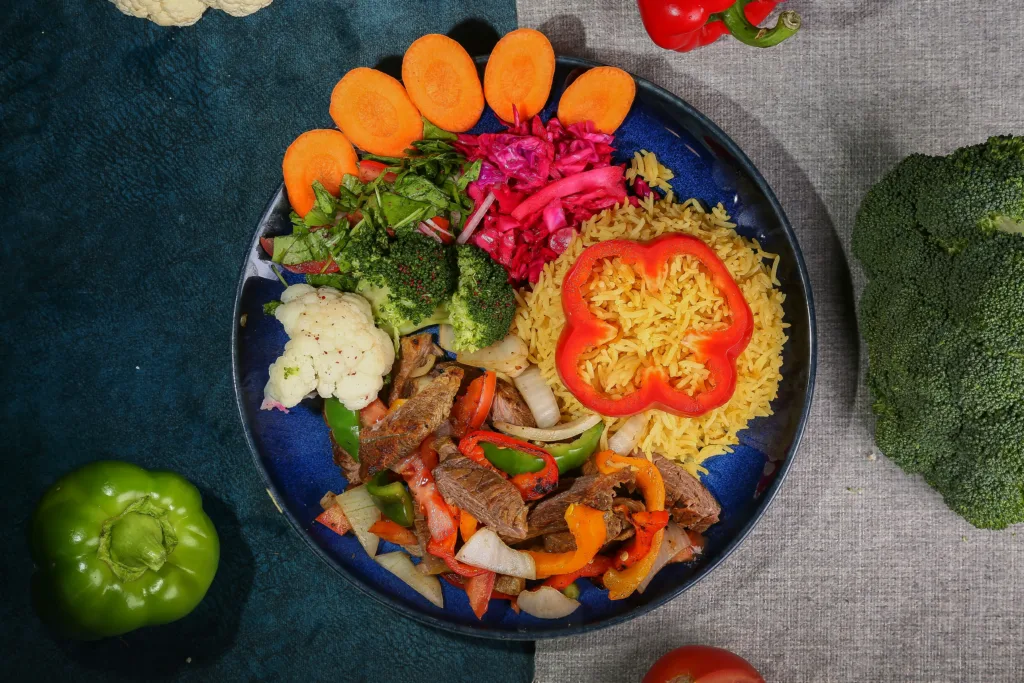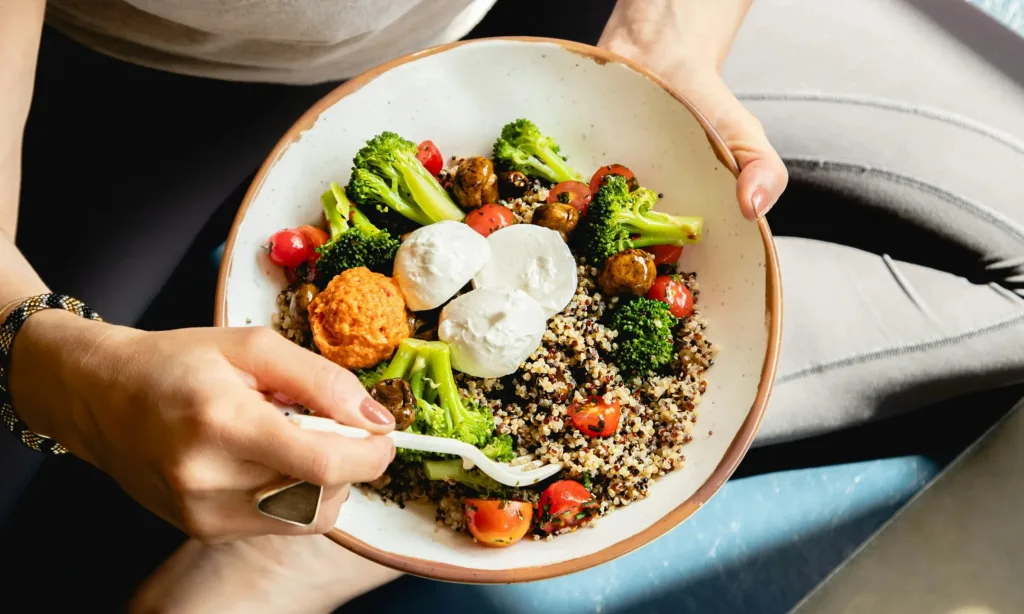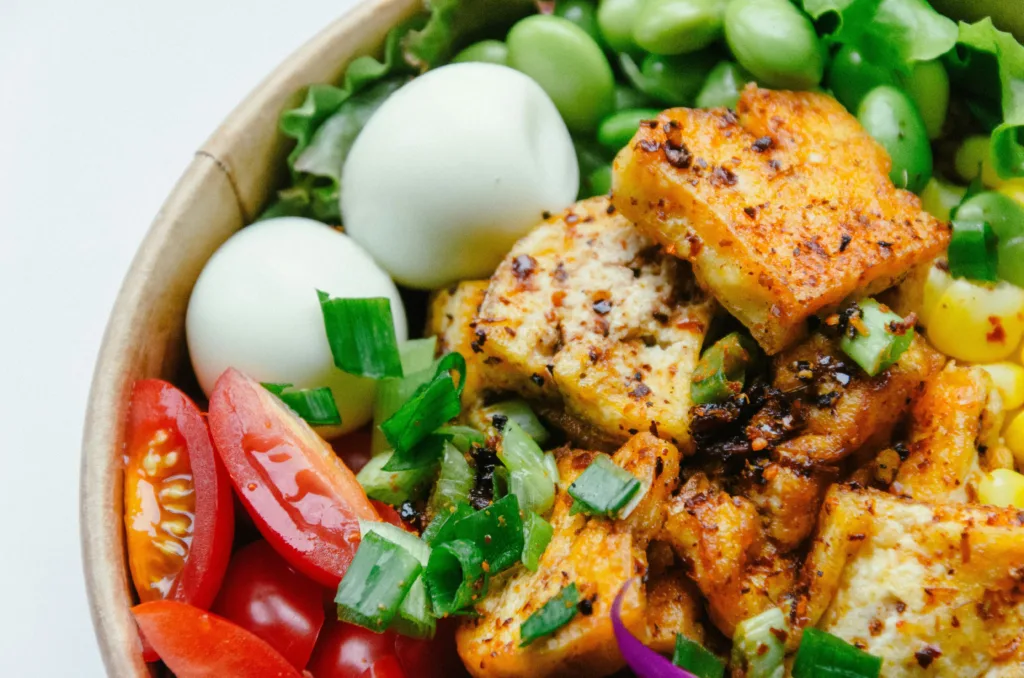When your pancreas is inflamed, even simple meals can feel like a gamble. The wrong ingredients can trigger discomfort fast, so eating well becomes less about flavor and more about not feeling worse. But you shouldn’t have to choose between food that works and food that tastes like cardboard. This meal plan takes the guesswork out of what to eat with pancreatitis. It’s built around light, low-fat meals that don’t ask much from your digestive system – just easy wins that help you feel better, one plate at a time.
And if you’re managing pancreatitis, you already know that eating “whatever’s in the fridge” isn’t really an option. At ReciMe, we’ve built a tool to help make low-fat, gut-friendly eating more doable even when you’re dealing with flare-ups or fatigue. You can save recipes that don’t trigger your symptoms, organize them into custom cookbooks, and build grocery lists that skip the greasy stuff. Whether you’re trying to avoid another flare or just want to stop stressing over what to eat, ReciMe helps you stick to your plan without overthinking it. Download ReciMe today and make eating feel simple again.


Why Diet Plays a Key Role in Pancreatitis Management
When your pancreas is irritated, fat becomes the enemy. Not because fat is inherently bad, but because digesting it takes effort – and effort is the last thing an inflamed pancreas needs. Every time you eat a heavy, greasy meal, your pancreas has to pump out enzymes to help break it down. That extra workload can ramp up inflammation, delay healing, or trigger another flare.
A low-fat, well-balanced diet gives your pancreas a break. It’s like turning down the volume so the body can recover in peace. The goal isn’t to eat bland food forever – it’s to eat smart while your gut calms down. Choosing gentle foods (like steamed veggies, lean proteins, and light grains) can actually make you feel better meal by meal, without guessing whether something will set you off.
And here’s the thing: it’s not just about avoiding fat. Timing matters too. Smaller meals spread throughout the day help you stay nourished without overloading your system. Think of it like pacing yourself – you’re still eating good food, just in a way your body can actually handle.

What a Week of Low-Fat Eating Actually Looks Like
This 7-day meal plan features low-fat, pancreas-friendly foods that are easy to prepare, with small portion sizes to support digestion and minimize pancreatic strain. No fancy ingredients, no complicated rules – just solid meals that help you stay full without pushing your luck. Each day includes breakfast, two snacks, lunch, and dinner. You can mix and match as needed, but keeping portions light and fat content low is the main priority.
Day 1 – Simple, Steady Meals to Ease In
This day is all about light textures and minimal ingredients to ease digestion without skipping nutrients.
- Breakfast: Cook half a cup of rolled oats in unsweetened almond milk. Top with a handful of fresh raspberries. Pair with a small bowl of plain low-fat Greek yogurt for protein.
- Morning Snack: A half-cup of unsweetened applesauce. Easy to tolerate and easy to carry if you’re on the go.
- Lunch: Skinless chicken breast grilled until tender, served with steamed broccoli florets and half a cup of cooked brown rice. Add a pinch of salt or fresh herbs like parsley.
- Afternoon Snack: One stick of low-fat string cheese with a small handful of fresh blueberries.
- Dinner: A 4 oz grilled white fish filet served with mashed potatoes made with almond milk. Add a side of steamed green beans cooked until soft.
Day 2 – Mild Flavors, Easy on the Stomach
A gentle combination of soft proteins, plain starches, and low-fiber vegetables to reduce irritation.
- Breakfast: Cream of wheat made with skim milk or water. Serve alongside two egg whites scrambled in a non-stick pan and one ripe banana.
- Morning Snack: One cup of plain low-fat Greek yogurt. If tolerated, stir in a spoonful of soft fruit puree.
- Lunch: Baked tilapia with a small peeled baked potato and steamed broccoli. Keep seasoning light – salt only.
- Afternoon Snack: A half-cup of fresh blueberries.
- Dinner: Oven-baked turkey breast served with plain white rice and lightly sautéed spinach cooked in water.
Day 3 – Balanced Meals With More Variety
This day introduces a little more texture without pushing fiber or fat too high.
- Breakfast: Egg white omelet filled with sautéed spinach and finely chopped tomato. Serve with two slices of plain whole grain toast.
- Morning Snack: A small apple (peeled if needed) with one slice of low-fat cheddar cheese.
- Lunch: Grilled chicken breast (cooked without oil) served with steamed or oven-baked cauliflower and half a cup of brown rice. Add fresh herbs or a splash of low-sodium broth for moisture.
- Afternoon Snack: Half a cup of low-fat cottage cheese topped with canned peaches in juice (not syrup).
- Dinner: Baked cod filet with lightly roasted potatoes and a side of steamed asparagus. Season with dried dill or lemon zest if tolerated.
Day 4 – Plant-Based Options Mixed In
Leaning slightly more plant-forward with lentils and yogurt-based meals that still keep fat in check.
- Breakfast: A layered parfait made with plain low-fat yogurt, a small handful of granola, and fresh blueberries.
- Morning Snack: One small bunch of grapes (seedless) with a mozzarella cheese stick.
- Lunch: One and a half cups of homemade or canned lentil soup (low-sodium), served with five saltine crackers and a small side salad of butter lettuce, cucumber, and light vinaigrette.
- Afternoon Snack: Thinly sliced cucumber with a low-fat yogurt-based dip and two boiled egg whites.
- Dinner: Baked turkey breast (4 oz) served with cooked quinoa and a cup of soft-cooked carrots.
Day 5 – Easy Prep, Steady Energy
Meals that come together fast but still keep your fat intake in check.
- Breakfast: Half a cup of cooked grits topped with two scrambled egg whites. Drink with a small glass (1 cup) of skim milk.
- Morning Snack: Half a cup of pineapple chunks (fresh or in juice) with a quarter cup of low-fat cottage cheese.
- Lunch: Whole wheat sandwich made with sliced turkey breast, lettuce, tomato, and a slice of low-fat Swiss cheese. Avoid mayo – use mustard or leave it dry.
- Afternoon Snack: Plain Greek yogurt topped with a handful of fresh raspberries.
- Dinner: Grilled shrimp (about 4-5 large pieces) served with brown rice and steamed broccoli. Use lemon zest or herbs instead of sauces.
Day 6 – Repeat-Friendly and Low-Stress
This day builds off earlier ingredients and lets you re-use leftovers, while still keeping meals gentle and balanced.
- Breakfast: Cook oatmeal with almond milk and stir in sliced canned peaches.
- Morning Snack: A few cubes of fresh watermelon and one low-fat cheese stick.
- Lunch: Turkey wrap using a whole wheat tortilla, sliced turkey, baby spinach, and a light drizzle of olive oil or hummus.
- Afternoon Snack: One small pear with a spoonful of plain low-fat yogurt.
- Dinner: Baked cod with mashed potatoes (made with olive oil and almond milk) and soft-steamed carrots. Salt lightly.
Day 7 – Gentle Finish With Familiar Foods
Keeping it basic and comfortable with meals you’ve already tried, just brought together into a quiet finish for the week.
- Breakfast: Plain yogurt mixed with dry oats and sliced strawberries. Let it sit a few minutes if eating cold.
- Morning Snack: A half-cup of unsweetened applesauce.
- Lunch: Grilled chicken breast (4 oz) served with brown rice and lightly cooked sugar snap peas. Keep seasoning basic.
- Afternoon Snack: Fresh blueberries and one slice of low-fat cheese.
- Dinner: Baked cod filet served with cooked quinoa and a small side salad made with soft greens, thin cucumber slices, and a touch of olive oil or lemon juice if tolerated.

What Not to Eat When Your Pancreas Is Fed Up
When your pancreas is inflamed, the wrong food can undo a whole day of eating well. Fat is the biggest issue – it’s hard to digest and forces the pancreas to work harder than it should. These are the foods most likely to cause trouble when you’re trying to heal:
- Fried and greasy foods: Think fries, chicken wings, onion rings, battered fish, and anything else that leaves oil on your fingers. These are top triggers for flare-ups.
- Fatty cuts of meat: Avoid bacon, sausage, ribs, and heavily marbled beef or pork. Even deli meats can be sneaky if they’re not labeled lean.
- Full-fat dairy products: Whole milk, heavy cream, cheese spreads, sour cream, and full-fat ice cream are all best left out. Swap for low-fat or non-fat versions when possible.
- Processed and packaged snacks: Chips, pastries, donuts, and frozen dinners often pack a lot of fat in small portions. Read the label – if it’s more than a few grams of fat per serving, it might not be worth it.
- Fast food and takeout: Most fast food is cooked in oil and loaded with saturated fat. Even the “healthier” options can come with hidden grease. If you’re ordering out, grilled and plain is your safest bet.
- Spicy, acidic, or overly seasoned foods: Tomato sauce, citrus, chili, vinegar-heavy dressings, and anything with heat can irritate the digestive system – even if the fat content is low.
- Alcohol and caffeine: Both can inflame or irritate the pancreas and gut lining. That includes beer, wine, cocktails, energy drinks, and strong coffee. If it buzzes, skip it.
You don’t have to avoid these things forever – but for now, keeping them off your plate gives your body space to do what it needs to do.

Making a Pancreatitis Diet Work Without Losing Your Mind
Sticking to a low-fat diet isn’t just about avoiding greasy food – it’s about rethinking how you eat, cook, and shop without turning every meal into a project. These tips are here to keep things manageable, not perfect.
Go Easy on the Portions
Smaller meals spaced throughout the day put less strain on your pancreas. Big, heavy plates can overload your system and trigger discomfort fast. Instead of three large meals, aim for five or six light ones. Think “satisfying but not stuffed.”
Check the Labels Like It’s a Habit
Check the fat content on labels for anything in a box, bag, or jar, aiming for items with 3 grams of fat or less per serving. Keep total daily fat intake to 30-50 grams to support pancreatitis management, and avoid ‘rich,’ ‘creamy,’ or ‘buttery’ products. You don’t need to obsess, but knowing what you’re working with makes a big difference.
Stick to Gentler Cooking Methods
How you cook matters as much as what you cook. Bake, broil, steam, poach, or grill. Avoid frying, sautéing in butter, or drowning ingredients in oil. Even a healthy food can turn into a problem if it’s cooked in the wrong way.
Build a Shortlist of Go-To Meals
Having a few solid meals you know your body can handle saves time and guesswork. Once you’ve found combos that sit well – like grilled chicken and rice or oatmeal with berries – rotate them. You don’t need a hundred recipes, just a handful that actually work.
Prep Ahead, Even a Little
Pancreatitis doesn’t care if you’re tired. Having a batch of cooked rice, a few steamed veggies, or some grilled protein in the fridge can be a lifesaver when you don’t feel like cooking but still want to avoid takeout regret.
Don’t Wait Until You’re Starving
Letting yourself get too hungry often leads to grabbing whatever’s fast, greasy, or convenient. Try eating on a regular schedule so you’re less likely to make last-minute food decisions that backfire later.
Listen to Your Gut – Literally
Everyone’s different. Just because something is technically low-fat doesn’t mean your body will love it. Keep a loose mental note (or jot it down) when something feels off after a meal. Over time, you’ll figure out your personal no-go foods.
Conclusion
Managing pancreatitis through food doesn’t mean you need to overhaul your life overnight. This 7-day meal plan is just a starting point – a way to eat without flaring up symptoms, stressing over every bite, or relying on dry toast and boiled rice. Once you figure out which foods your body can handle, everything gets a little easier. It’s not about being perfect. It’s about making meals that work for you, one low-fat, gut-friendly dish at a time.
FAQ
1. Can I ever go back to eating normally?
That depends on the type and severity of your pancreatitis. Some people can gradually reintroduce foods, while others need to stick with low-fat eating long-term. Always talk to your doctor or a dietitian before making big changes.
2. Is it okay to eat carbs like bread and rice?
Yes – carbs are not the enemy here. Just go for whole grains when you can, and pair them with lean proteins and low-fat sides. White rice is usually fine during flare-ups because it’s easier to digest.
3. What’s a good snack when I’m in a rush?
Low-fat yogurt, fruit, a handful of almonds, or a slice of turkey with crackers are all solid options. Keep a few go-to snacks ready so you’re not reaching for something that’ll backfire later.
4. Do I have to completely avoid fat?
No, but keep fat intake very low, aiming for meals with 3-5 grams of fat each to stay within a daily limit of 30-50 grams, depending on your condition and medical advice. Some healthy fats (like those in avocado or nuts) can still work in small portions.
5. How do I handle eating out?
Stick to grilled, steamed, or baked options. Ask for sauces and dressings on the side, and skip anything that’s fried or creamy. You don’t have to announce your diet – just make low-fat choices that won’t leave you regretting dinner.
6. What if I’m still feeling sick after eating?
If symptoms don’t ease or keep coming back, it’s worth checking in with a healthcare provider. Food is only part of the picture – and sometimes it takes a little extra support to figure things out.
